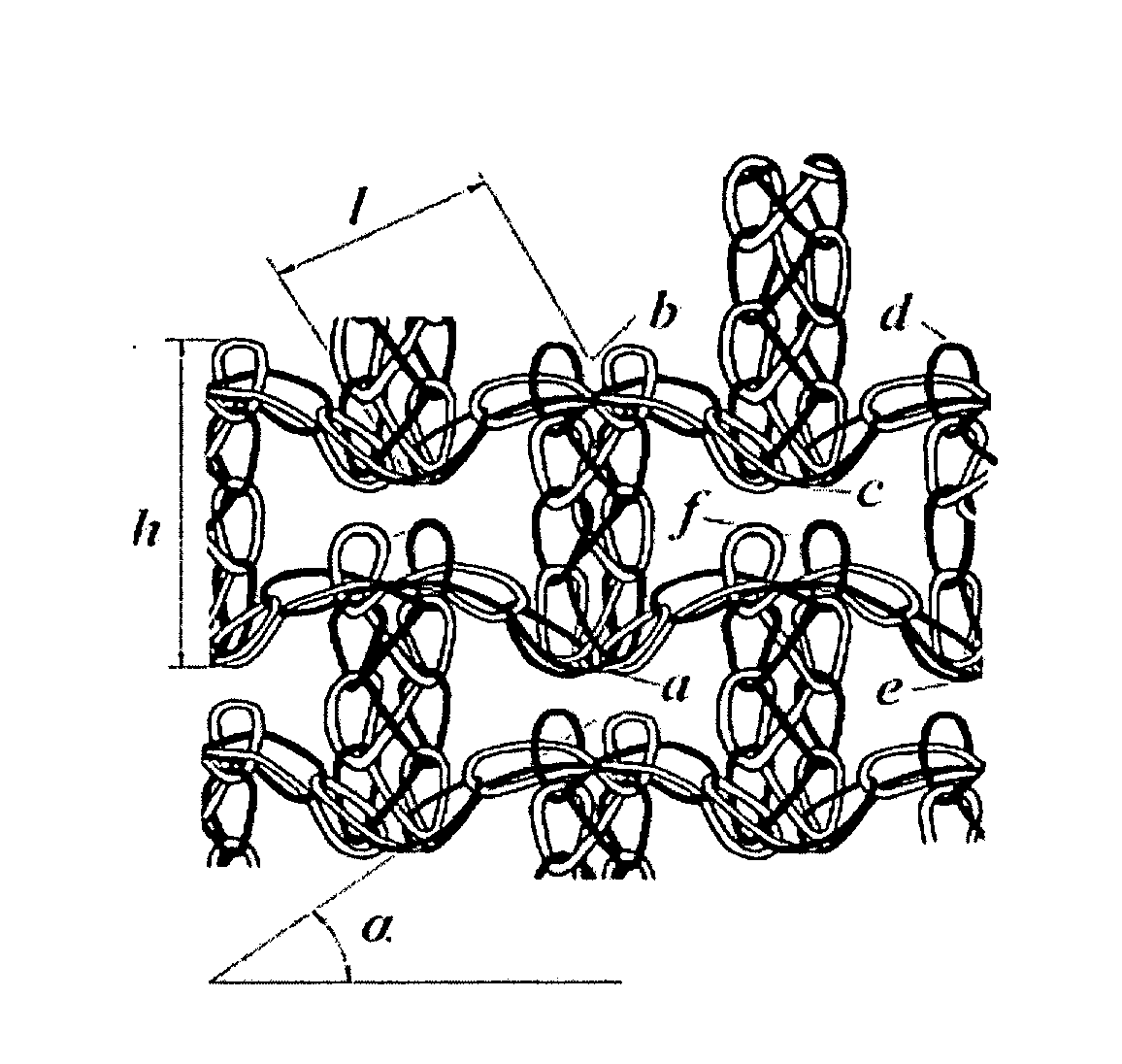Auxetic Fabric Structures and Related Fabrication Methods
a technology of fabrication method and fabric, applied in the field ofauxetic fabric structure and related fabrication method, can solve the problems of limited utilization of fiber stiffness and strength of severely bent fibers, damage inflicted on fibers, and in-plane mechanical performance less than optimal
- Summary
- Abstract
- Description
- Claims
- Application Information
AI Technical Summary
Benefits of technology
Problems solved by technology
Method used
Image
Examples
Embodiment Construction
[0025]As can relate to certain embodiments of this invention, textiles with net structure are often preferred for composites. The selection of a knit structure can be based on three technical criteria: First, the deformability of the knitted fabric, as it determines what shapes can be formed with it; as a second selection criterion, the resulting mechanical (and other) properties of the knitted fabric composite; and as a third criterion for selection of a knit structure, the hand. (Ugbolue, Samuel C., Warner, Steve B., Kim. Yong, K., Fan, Qinguo, Yang, Chen-Lu, Feng, Yani, The Formation and Performance of Auxetic Textiles, National Textile Center, Project F06-MD09, Annual Report November 2006.) As would be understood in the art, warp knitting technology provides a suitable know-how for net structures and offers major advantages in its versatility and high production speed. However, the set-up costs are considerable because the knitting machine has to be equipped with one or two need...
PUM
 Login to View More
Login to View More Abstract
Description
Claims
Application Information
 Login to View More
Login to View More - R&D
- Intellectual Property
- Life Sciences
- Materials
- Tech Scout
- Unparalleled Data Quality
- Higher Quality Content
- 60% Fewer Hallucinations
Browse by: Latest US Patents, China's latest patents, Technical Efficacy Thesaurus, Application Domain, Technology Topic, Popular Technical Reports.
© 2025 PatSnap. All rights reserved.Legal|Privacy policy|Modern Slavery Act Transparency Statement|Sitemap|About US| Contact US: help@patsnap.com



